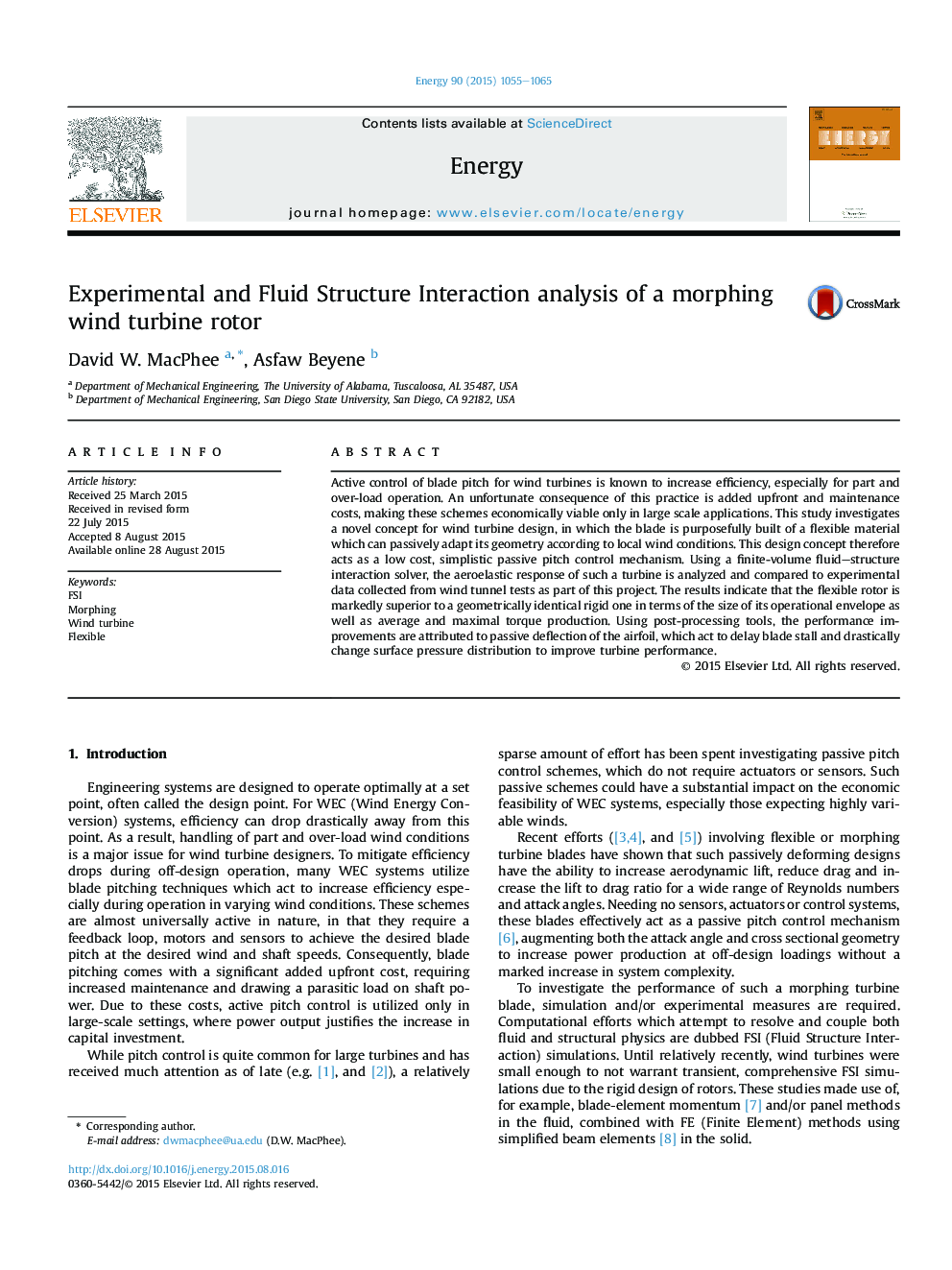| کد مقاله | کد نشریه | سال انتشار | مقاله انگلیسی | نسخه تمام متن |
|---|---|---|---|---|
| 1731804 | 1016097 | 2015 | 11 صفحه PDF | دانلود رایگان |
• We experimentally investigate a flexible horizontal axis wind turbine.
• We model the turbine using finite-volume fluid-structure interaction.
• Flexible bladed design increases both efficiency and range of operation.
• Efficiency increases are attributed to passive deflection of blades.
Active control of blade pitch for wind turbines is known to increase efficiency, especially for part and over-load operation. An unfortunate consequence of this practice is added upfront and maintenance costs, making these schemes economically viable only in large scale applications. This study investigates a novel concept for wind turbine design, in which the blade is purposefully built of a flexible material which can passively adapt its geometry according to local wind conditions. This design concept therefore acts as a low cost, simplistic passive pitch control mechanism. Using a finite-volume fluid–structure interaction solver, the aeroelastic response of such a turbine is analyzed and compared to experimental data collected from wind tunnel tests as part of this project. The results indicate that the flexible rotor is markedly superior to a geometrically identical rigid one in terms of the size of its operational envelope as well as average and maximal torque production. Using post-processing tools, the performance improvements are attributed to passive deflection of the airfoil, which act to delay blade stall and drastically change surface pressure distribution to improve turbine performance.
Journal: Energy - Volume 90, Part 1, October 2015, Pages 1055–1065
